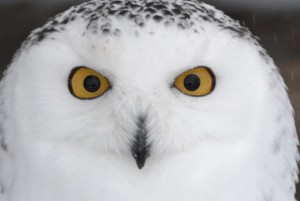This is lesson 2 with Molly the Morepork. Like the last lesson, this lesson talks about certain aspects of the RECIPE for successful behavior management of animals in your care. The RECIPE is an acronym standing for the following.
- R – Reinforcement.
- E – Environment.
- C – Communication.
- I – Information.
- P – Partnerships
- E – Empowerment.
This behavior management video series with Molly the Morepork is the first video series ever produced for Animal Training Academy. It is being digitally remastered for the Academy’s first year anniversary. Read on to learn a little bit more about the content for this lesson.
Behavior Management – Choosing with her feet
When training, it’s important to let your animal choose whether or not to participate. We can allow them to make this decision with their feet. I.e. if they don’t want to participate they can choose to move away. If they do want to participate (and be presented with opportunities to earn reinforcement) they can move towards you (or stay stationary, with you moving towards them). In this lessons video you will learn how Molly did just that. She communicated to me when I got too close by choosing to move away. However if Molly stayed stationary I reinforced her with food.
Three things to identify in the early stages of training/behavior management.
- You have correctly identified what’s reinforcing for your animal.
- You have your reinforcers ready to offer in your training sessions.
- You listen to your animals body language and take things at their pace.
 If you have achieved the above three things, this will assist with the following areas of your behavior management. Firstly it will help develop your relationships. Your animals will learn that they can control the environment via their behavior. For example your animal can communicate it’s uncomfortable with your proximity, by moving away. Also, if it does the behaviors you want, it will learn that good things happen (i.e. reinforcers get delivered). This practice helps empower your animal, promote high welfare and foster trust.
If you have achieved the above three things, this will assist with the following areas of your behavior management. Firstly it will help develop your relationships. Your animals will learn that they can control the environment via their behavior. For example your animal can communicate it’s uncomfortable with your proximity, by moving away. Also, if it does the behaviors you want, it will learn that good things happen (i.e. reinforcers get delivered). This practice helps empower your animal, promote high welfare and foster trust.

This is probably a good strategy when working with wild species and if you have a lot of time. With domesticated species if I’m trying to “make friends” with a treat, I like to put them in a more confined space so they can’t escape too far. I’ll move in with a treat but back off if they start getting agitated. You don’t want to push so hard that they go into panic mode. But if the animal can successfully evade, it will take a lot longer to get close enough for them to try the treat you are offering. Sometimes you can introduce a treat more quickly through a fence because the animal feels safer with that barrier between the two of you.
Hi Sue
Thanks for the comment. It’s great to have these discussions and thank you for the opportunity to learn and grow together.
I would argue that there’s no distinction here between domestic and wild. As long as you have your reinforcers right/ready to deliver and you listen to your animal’s body language then you can achieve the same results I did with Molly here, regardless of species.
It will take longer as opposed to confining them. Is this a question of effectiveness I wonder? I.e. it’s more effective to do it quickly. My input at this stage of the conversation would be that in making decisions about training methodology, effectiveness is not the only criterion I take into consideration.
Empowering my animals to move away if uncomfortable, is important to me even if it takes longer. I tried to use the clicker here followed by a quick throw down of food on the ground and an exiting of the environment. The clicker helps communicate the exact behavior and my exit allows the animal to come and collect food. Then I withhold that food until the animal maintains “calm” behavior whilst I inch closer… Then I click throw food down and leave… Pretty soon I can approach the animal quite quickly. Although one could argue in these environments the animals are still confined by their exhibits.
What do you think?
Once again I’m very happy you have started this conversation and I really look forward to continuing it and hearing your next piece of input.
Best Regards – Ryan Cartlidge.